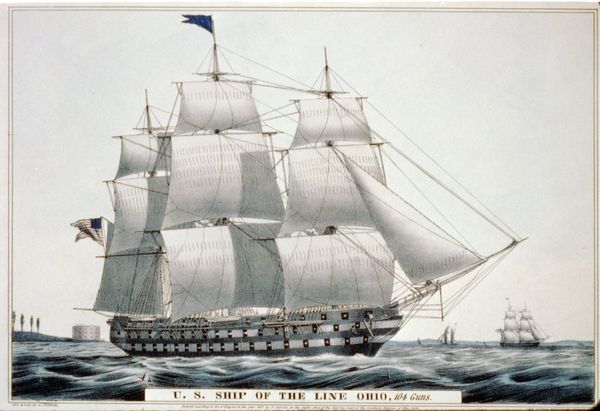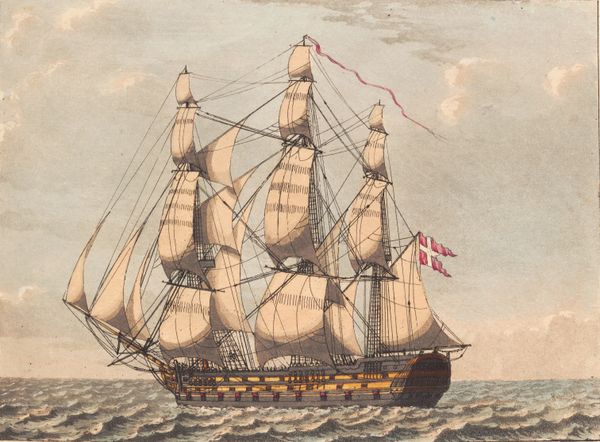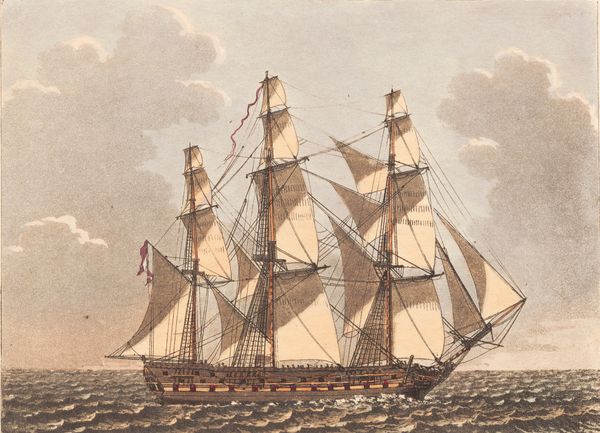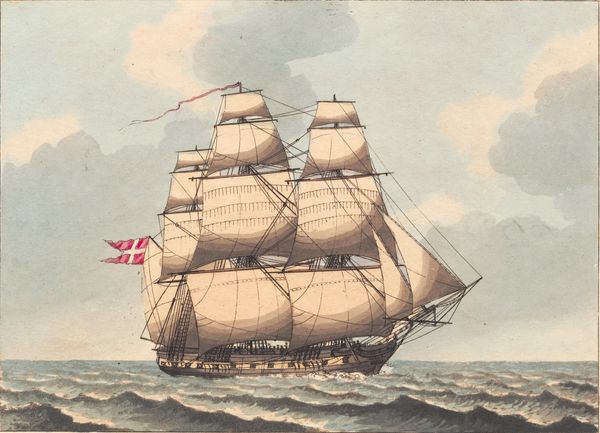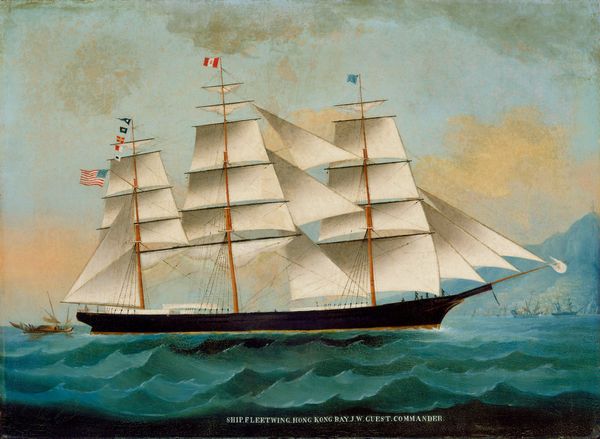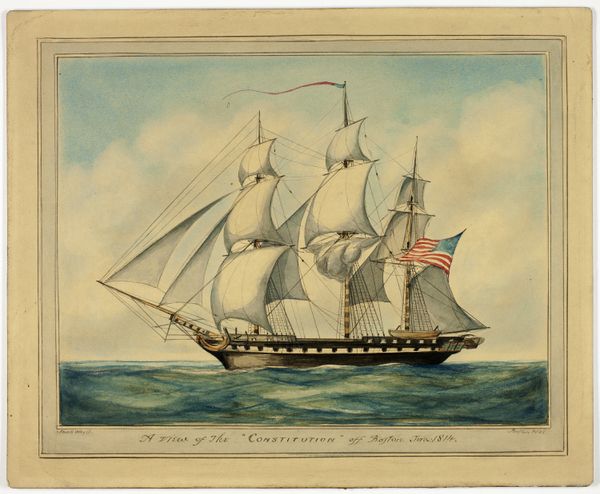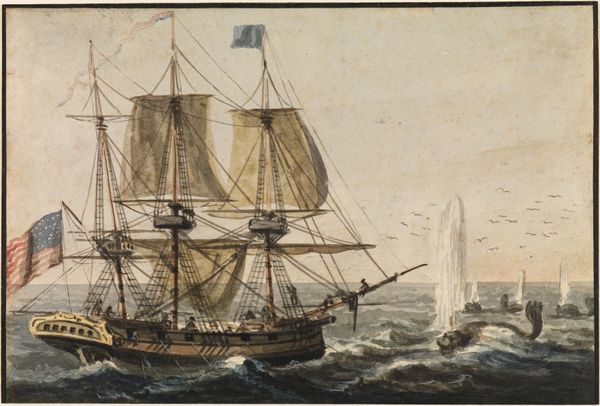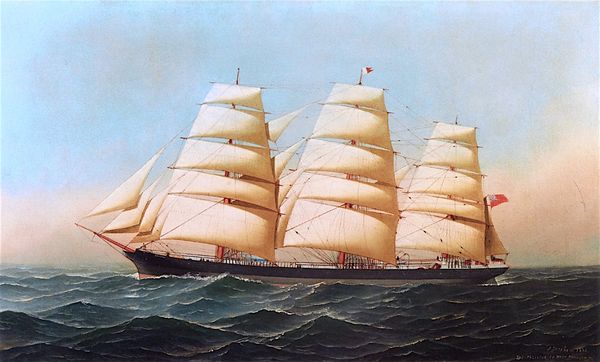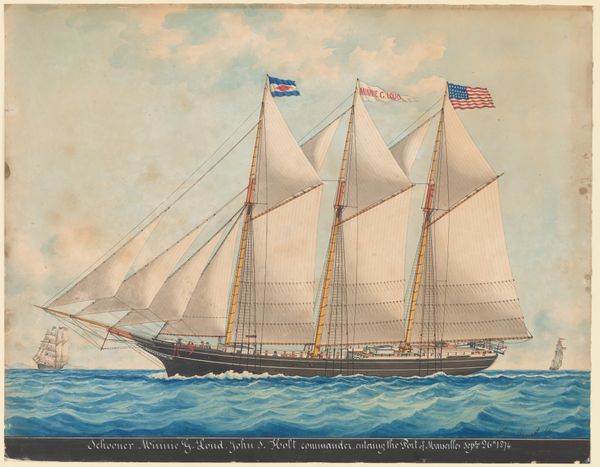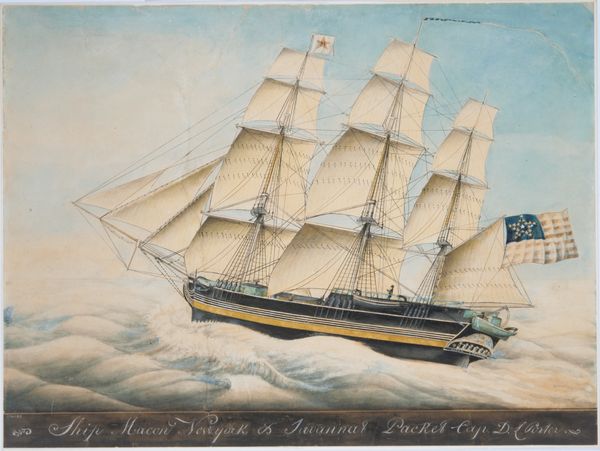
lithograph, print, watercolor
#
lithograph
#
ship
# print
#
landscape
#
watercolor
#
romanticism
#
watercolour illustration
Copyright: Public domain
Curator: Welcome! Here we have a lithograph titled "U.S. ship of the Line Pennsylvania, 140 guns," crafted in 1847 by Currier and Ives, using watercolor to enhance the details. Editor: It’s a rather serene, almost idyllic portrayal. The crispness of the ship sharply contrasts with the softer washes of the sky and water, creating an impressive image overall. Curator: The ship itself becomes the subject, its monumental size dwarfing any human element, reflecting a fascination with industrial capabilities during that era, lithography being part of that movement as well. What does the medium say to you? Editor: I am intrigued by the romantic vision that romanticism creates. I wonder about how it obfuscates the social narratives inherent in naval power. The ship embodies the ideology of American exceptionalism, expanding influence via manufacturing and resource exploitation while conveniently forgetting about who and what suffers under this. Curator: Interesting point. The printmaking process itself also involved labor and economic conditions. Currier and Ives ran a business producing prints for a mass audience; and understanding its commerciality also changes the understanding. Editor: Absolutely, let's remember this image normalizes not only maritime expansion but also hides from plain sight those on the margins of it all, thus it demands closer study and perhaps some interrogation to do justice to those obscured histories. Curator: The watercolor adds another layer. It is very common to find black and white lithographs from this era so someone spent a bit of time hand coloring it to create a special, perhaps more luxurious, object. That makes it more than just industrial production. Editor: Yes, the delicate application of color softens what is still, undeniably, an instrument of war. I see an attempt at romanticizing this. What narrative do you think this ship invites from its contemporary audience? Curator: Looking closely at its process, its composition, materiality, and historical context can lead us to different ways of making meaning. Editor: Indeed, analyzing this lithograph, therefore, pushes us to consider the complexities within the intersections of gender, race, economics, and ideology. That is what moves it from a static portrait of something to a powerful lens into the dynamics that constructed our world.
Comments
No comments
Be the first to comment and join the conversation on the ultimate creative platform.

